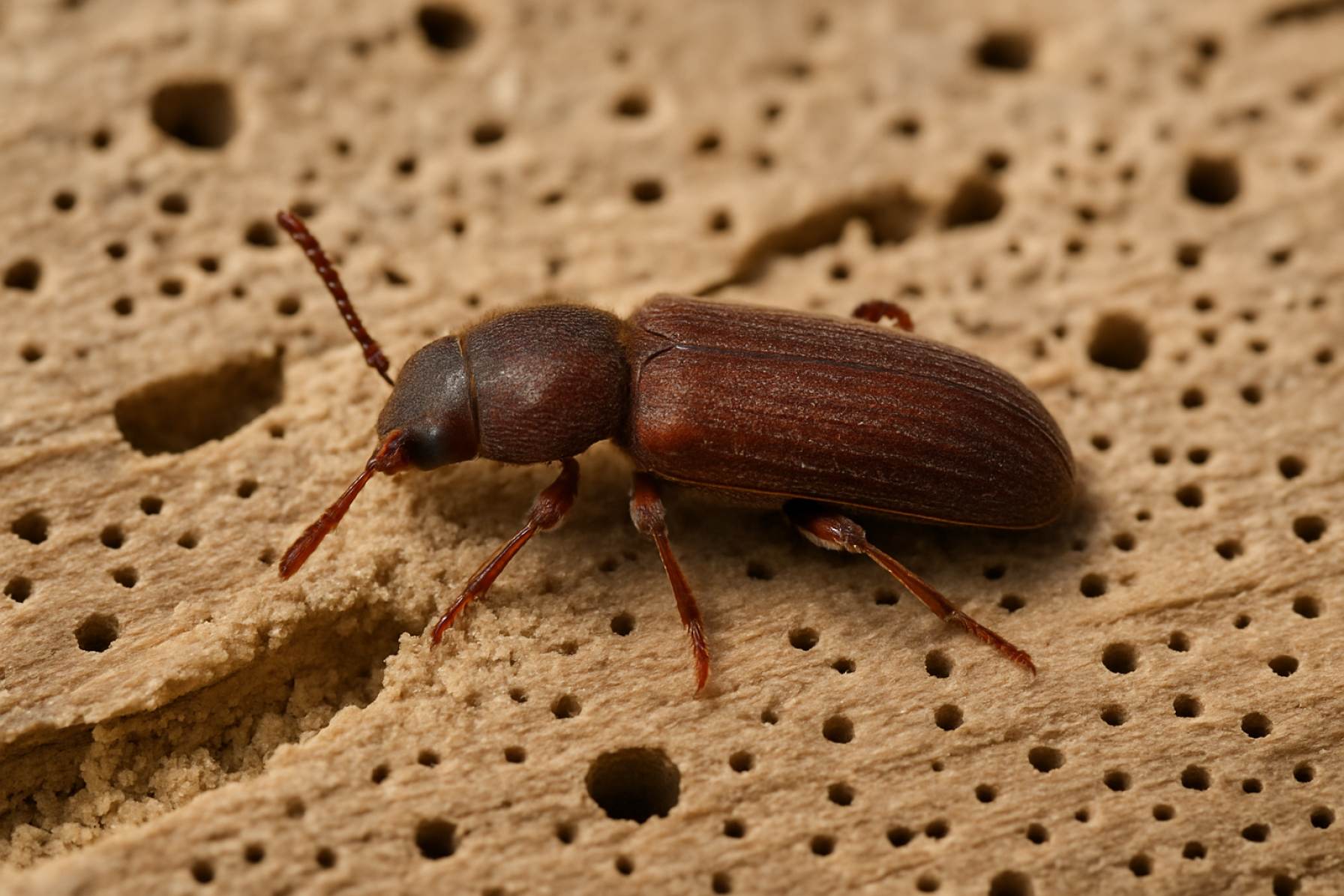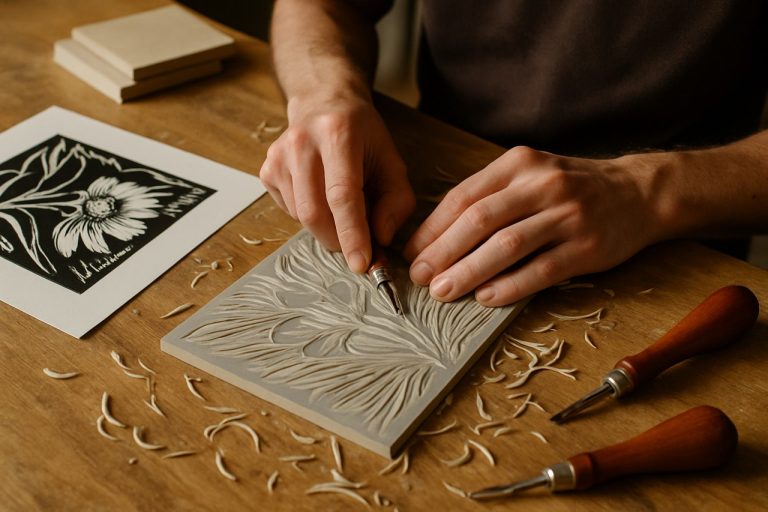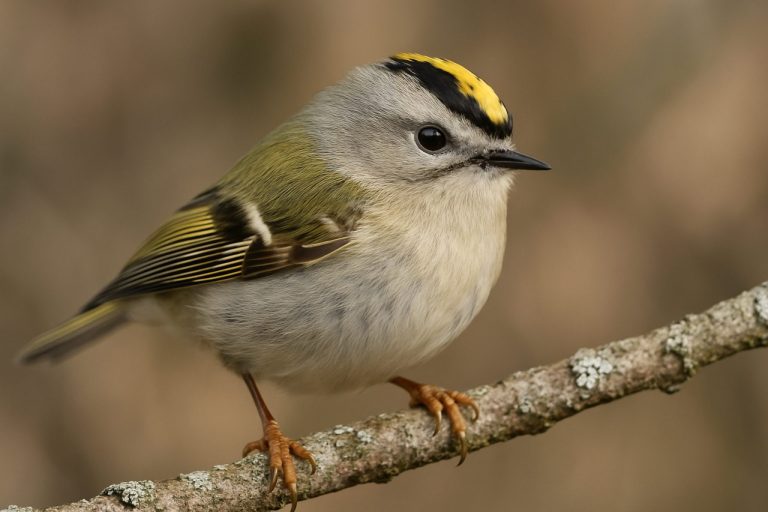
Unmasking Powderpost Beetles: How These Tiny Insects Cause Massive Damage to Wood and What You Need to Know to Protect Your Property (2025)
- Introduction: What Are Powderpost Beetles?
- Life Cycle and Identification of Powderpost Beetles
- Species Spotlight: Key Types and Their Global Distribution
- Signs of Infestation: How to Detect Powderpost Beetles Early
- Impact on Wood Structures: Economic and Structural Consequences
- Prevention Strategies: Protecting Wood from Infestation
- Control and Treatment Methods: Chemical and Non-Chemical Solutions
- Regulatory Guidelines and Best Practices (Referencing epa.gov and usda.gov)
- Market Trends: Rising Demand for Wood Protection Solutions (Estimated 8% Growth in Public Interest, 2024–2028)
- Future Outlook: Innovations in Detection and Sustainable Management
- Sources & References
Introduction: What Are Powderpost Beetles?
Powderpost beetles are a group of wood-boring insects known for their ability to reduce wood to a fine, powdery dust as they feed and develop. The term “powderpost beetle” commonly refers to several species within the families Lyctidae, Bostrichidae, and Anobiidae. These beetles are of significant concern in both residential and commercial settings due to their potential to damage structural timber, hardwood flooring, furniture, and other wooden objects. The larvae, rather than the adult beetles, are primarily responsible for the destruction, as they tunnel through wood while feeding, leaving behind a network of galleries filled with frass—a fine, talc-like powder that is a telltale sign of infestation.
Powderpost beetles are typically small, ranging from 1/16 to 1/4 inch in length, and are often reddish-brown to black in color. Their life cycle includes egg, larval, pupal, and adult stages, with the larval stage lasting from several months to several years, depending on environmental conditions and wood type. The adult beetles emerge from the wood, leaving small, round exit holes that are often the first visible indication of an infestation. These exit holes are usually 1/32 to 1/8 inch in diameter, and their presence, along with the powdery frass, helps distinguish powderpost beetle activity from other wood-destroying organisms.
The primary concern with powderpost beetles is their ability to weaken wood over time, potentially compromising the structural integrity of buildings and valuable wooden items. Infestations are most common in wood with a high starch content, such as unfinished hardwoods, and are often associated with improper storage or use of untreated lumber. While powderpost beetles are found worldwide, they are particularly prevalent in warm, humid climates, which favor their development and reproduction.
Effective identification and management of powderpost beetles require an understanding of their biology and behavior. Organizations such as the United States Environmental Protection Agency and the Animal and Plant Health Inspection Service (APHIS), a division of the U.S. Department of Agriculture, provide guidance on pest control and wood preservation practices to help prevent and mitigate infestations. These agencies play a key role in regulating wood treatment standards and offering resources for homeowners and professionals dealing with powderpost beetle issues.
Life Cycle and Identification of Powderpost Beetles
Powderpost beetles are a group of wood-boring insects belonging primarily to the families Lyctidae, Bostrichidae, and Anobiidae. These beetles are notorious for their ability to reduce wood to a fine, powdery dust, hence their common name. Understanding their life cycle and identification is crucial for effective management and prevention of structural damage.
The life cycle of powderpost beetles typically consists of four stages: egg, larva, pupa, and adult. Female beetles lay their eggs in the pores or cracks of unfinished or untreated wood. Upon hatching, the larvae—small, white, and C-shaped—bore into the wood, feeding on its starch and cellulose content. This larval stage is the most destructive and can last from several months to several years, depending on environmental conditions such as temperature, humidity, and wood type. After completing their development, larvae pupate within the wood, eventually emerging as adults through small, round exit holes, usually 1/32 to 1/8 inch in diameter. The entire life cycle can range from a few months to several years, with the majority of damage occurring during the larval feeding period.
Identification of powderpost beetles relies on both the appearance of the adult beetles and the evidence they leave behind. Adult Lyctid powderpost beetles are typically reddish-brown to black, slender, and range from 1/8 to 1/4 inch in length. Bostrichid beetles are more robust and cylindrical, while Anobiid beetles are often brown and slightly hairy. The most distinctive sign of infestation is the presence of fine, talc-like powder (frass) near exit holes on wood surfaces. These holes are usually clean and round, distinguishing powderpost beetle activity from other wood-boring insects. Additionally, infested wood may sound hollow or weakened due to extensive internal tunneling.
Proper identification is essential, as different species have varying wood preferences and infestation patterns. For example, Lyctid beetles primarily attack hardwoods such as oak, ash, and walnut, while Anobiid beetles can infest both hardwoods and softwoods, including structural timbers. Recognizing these differences aids in targeted control measures and helps prevent further damage.
For more detailed information on powderpost beetle biology and identification, resources are available from organizations such as the United States Environmental Protection Agency and the United States Department of Agriculture, both of which provide guidance on pest management and wood protection.
Species Spotlight: Key Types and Their Global Distribution
Powderpost beetles are a group of wood-boring insects belonging primarily to the families Lyctidae, Bostrichidae, and Anobiidae. These beetles are notorious for their ability to reduce wood to a fine, powdery dust, causing significant structural and aesthetic damage to timber, furniture, and wooden artifacts. Understanding the key species and their global distribution is essential for effective identification and management.
The Lyctidae family, commonly known as true powderpost beetles, is perhaps the most widespread and economically significant group. Lyctid beetles primarily infest hardwoods, such as oak, ash, and walnut, targeting wood with high starch content. The most notable species include Lyctus brunneus and Lyctus linearis. These beetles are cosmopolitan, found in temperate and tropical regions worldwide, including North America, Europe, Asia, Australia, and Africa. Their global distribution is largely attributed to the international trade of infested wood products.
The Bostrichidae family, or false powderpost beetles, encompasses species such as Bostrychus capucinus and Heterobostrychus aequalis. These beetles infest both hardwoods and softwoods and are particularly prevalent in tropical and subtropical regions. Bostrichid beetles are often associated with bamboo, furniture, and structural timbers. Their larvae bore deep into wood, making detection and control challenging. The global movement of timber has facilitated their spread to new regions, including parts of North America and Europe.
The Anobiidae family, which includes the common furniture beetle (Anobium punctatum), is primarily found in temperate climates. Anobiid beetles prefer wood with higher moisture content and are frequently encountered in older buildings, historic structures, and antique furniture. Their distribution is extensive across Europe, North America, and parts of Asia. Unlike Lyctids, Anobiids can infest both hardwoods and softwoods, making them a versatile threat to a wide range of wooden materials.
The global distribution of powderpost beetles is closely linked to human activity, particularly the movement of infested wood and wood products. Regulatory agencies such as the United States Department of Agriculture Animal and Plant Health Inspection Service and the Food and Agriculture Organization of the United Nations monitor and manage the spread of these pests through quarantine measures and international standards. Understanding the diversity and distribution of powderpost beetle species is crucial for developing targeted management strategies and protecting wooden structures worldwide.
Signs of Infestation: How to Detect Powderpost Beetles Early
Early detection of powderpost beetle infestations is crucial for minimizing structural damage and preventing the spread of these wood-boring insects. Powderpost beetles, which include several species primarily from the families Lyctidae, Anobiidae, and Bostrichidae, are notorious for infesting seasoned hardwoods and softwoods, often targeting furniture, flooring, and structural timbers. Recognizing the signs of their presence can help homeowners and professionals intervene before significant harm occurs.
One of the most distinctive indicators of powderpost beetle activity is the appearance of small, round exit holes on the surface of wood. These holes typically measure between 1/32 and 1/8 inch in diameter, depending on the beetle species. The holes are created by adult beetles emerging from the wood after completing their larval development. Accompanying these exit holes, a fine, powdery frass (wood dust) is often found either loosely packed in the holes or accumulated beneath infested wood. This frass is a byproduct of the larvae feeding and tunneling through the wood and is a key diagnostic feature distinguishing powderpost beetle infestations from other wood-damaging pests.
Another sign of infestation is the presence of live or dead adult beetles near infested wood, especially during the warmer months when adults are most active. These beetles are generally small, ranging from 1/8 to 1/4 inch in length, and may be observed crawling on surfaces or windowsills. In some cases, faint clicking or rustling sounds may be heard from within infested wood, produced by the larvae as they feed and move.
Over time, infested wood may exhibit structural weakening, such as blistering, splintering, or even crumbling, particularly if the infestation has persisted for several years. In severe cases, the wood may feel soft to the touch or break apart easily, revealing extensive internal galleries created by the larvae. It is important to note that powderpost beetle damage often remains hidden until the infestation is advanced, underscoring the importance of regular inspections, especially in older buildings or where wood has a high moisture content.
For accurate identification and assessment, consulting with pest management professionals or entomologists is recommended. Organizations such as the United States Environmental Protection Agency and the United States Department of Agriculture provide guidance on wood-destroying pests and best practices for detection and control. Early recognition of these signs enables timely intervention, reducing the risk of costly repairs and preserving the integrity of wooden structures.
Impact on Wood Structures: Economic and Structural Consequences
Powderpost beetles are a group of wood-boring insects whose larvae feed on and damage seasoned hardwoods and, in some cases, softwoods. Their impact on wood structures is significant, both economically and structurally, making them a major concern for property owners, the construction industry, and heritage conservationists.
Structurally, powderpost beetle infestations can compromise the integrity of wooden elements in buildings, including beams, flooring, furniture, and decorative trim. The larvae tunnel through wood, creating a network of galleries that weaken the material from within. Over time, this can result in reduced load-bearing capacity, warping, and, in severe cases, structural failure. The damage is often not immediately visible, as the beetles typically emerge through small exit holes, leaving behind a fine, powdery frass (wood dust) as evidence of their activity. This hidden nature of infestation means that significant harm can occur before detection, especially in attics, crawl spaces, or within wall cavities.
Economically, the consequences of powderpost beetle infestations are substantial. Property owners may face costly repairs or replacement of affected wood, as well as expenses related to professional pest control treatments. In the United States, for example, wood-destroying insects, including powderpost beetles, are responsible for billions of dollars in damage annually. The United States Environmental Protection Agency (EPA), which regulates pesticides and provides guidance on pest management, highlights the importance of early detection and integrated pest management to minimize these costs. Additionally, the presence of powderpost beetles can reduce property values and complicate real estate transactions, as many lenders require pest inspections before approving mortgages.
For historic buildings and cultural heritage sites, the impact is even more profound. The National Park Service, a leading authority in historic preservation, notes that powderpost beetles pose a serious threat to irreplaceable wooden artifacts and architectural features. Infestations can lead to the loss of original materials, undermining the authenticity and historical value of structures. Restoration efforts often require specialized treatments and careful replacement of damaged wood, further increasing costs and complexity.
In summary, powderpost beetles present a dual threat: they undermine the physical stability of wood structures and impose significant economic burdens on individuals, businesses, and institutions responsible for their maintenance and preservation. Effective management and prevention are essential to mitigate these impacts and protect both modern and historic wood assets.
Prevention Strategies: Protecting Wood from Infestation
Preventing powderpost beetle infestations is essential for maintaining the structural integrity and appearance of wood in homes, furniture, and other wooden objects. These beetles, which include several species from the families Lyctidae, Anobiidae, and Bostrichidae, are notorious for their ability to reduce wood to a fine powder, often going unnoticed until significant damage has occurred. Effective prevention strategies focus on eliminating conditions favorable to beetle development and interrupting their life cycle.
One of the most important prevention measures is the use of properly seasoned and kiln-dried wood. Powderpost beetles are attracted to wood with high moisture content, particularly freshly cut or improperly dried lumber. Kiln drying not only reduces moisture but also kills any eggs or larvae present in the wood. Ensuring that all wood used in construction or furniture making is thoroughly dried and stored in dry conditions is a primary defense against infestation. The United States Department of Agriculture (USDA) recommends maintaining wood moisture content below 20% to deter beetle activity.
Applying surface finishes such as varnish, paint, or sealants can also help protect wood from powderpost beetles. These finishes create a barrier that prevents adult beetles from laying eggs on exposed wood surfaces. However, it is important to note that finishes are most effective on hardwoods, as some beetle species can still infest softwoods through cracks or unfinished areas. Regular inspection of wood surfaces for signs of exit holes or frass (powdery residue) is crucial for early detection and intervention.
Environmental control is another key strategy. Powderpost beetles thrive in warm, humid environments. Using dehumidifiers and ensuring proper ventilation in storage areas, attics, and basements can significantly reduce the risk of infestation. The United States Environmental Protection Agency (EPA) highlights the importance of moisture management in preventing wood-destroying pests.
- Use only kiln-dried, properly stored wood for construction and furniture.
- Apply protective finishes to all exposed wood surfaces.
- Maintain indoor humidity below 60% to inhibit beetle development.
- Inspect wood regularly for signs of infestation and address issues promptly.
- Store firewood and lumber away from living spaces and off the ground.
By integrating these prevention strategies, homeowners and professionals can significantly reduce the likelihood of powderpost beetle infestations and protect valuable wood assets for years to come.
Control and Treatment Methods: Chemical and Non-Chemical Solutions
Powderpost beetles are a group of wood-boring insects that can cause significant structural and aesthetic damage to wood in homes, furniture, and other wooden objects. Effective management of powderpost beetle infestations requires a combination of chemical and non-chemical control methods, tailored to the extent of the infestation and the type of wood affected.
Chemical Control Methods
- Surface Treatments: Application of residual insecticides, such as borate-based products, is a common approach for treating exposed wood surfaces. These chemicals penetrate the wood and kill larvae as they feed. Borates are favored for their low toxicity to humans and pets and their long-lasting protection against reinfestation.
- Fumigation: For severe or widespread infestations, whole-structure fumigation may be necessary. This process involves sealing the affected area and introducing a fumigant gas that permeates the wood, killing all life stages of the beetle. Fumigation is highly effective but requires professional application and temporary evacuation of the premises. The United States Environmental Protection Agency (EPA) regulates the use of fumigants and other pesticides to ensure safety and efficacy.
- Injection Treatments: In cases where infestations are localized, insecticides can be injected directly into exit holes or galleries. This method targets larvae within the wood and minimizes chemical exposure to the surrounding environment.
Non-Chemical Control Methods
- Moisture Control: Powderpost beetles thrive in wood with higher moisture content. Reducing humidity and ensuring proper ventilation in crawl spaces, basements, and attics can make the environment less hospitable for beetle development. The United States Department of Agriculture (USDA) recommends maintaining wood moisture content below 20% to deter infestation.
- Removal of Infested Wood: Physically removing and replacing heavily infested wood is often the most effective solution for localized infestations, especially in structural components or furniture.
- Heat Treatment: Exposing infested wood to temperatures above 120°F (49°C) for several hours can kill all stages of powderpost beetles. This method is chemical-free and suitable for certain furniture and small wooden items.
- Preventive Measures: Using kiln-dried or properly seasoned wood in construction and furniture manufacturing reduces the risk of infestation. Regular inspection and prompt repair of damaged wood also help prevent beetle establishment.
Integrated pest management strategies, combining both chemical and non-chemical approaches, are recommended for long-term control and prevention of powderpost beetle infestations. Homeowners and professionals should consult guidelines from recognized authorities such as the United States Environmental Protection Agency and the United States Department of Agriculture for safe and effective treatment options.
Regulatory Guidelines and Best Practices (Referencing epa.gov and usda.gov)
Regulatory guidelines and best practices for managing powderpost beetles in the United States are primarily established and overseen by federal agencies such as the U.S. Environmental Protection Agency (EPA) and the U.S. Department of Agriculture (USDA). These organizations play a critical role in ensuring that pest management strategies are both effective and safe for human health and the environment.
The EPA is responsible for regulating pesticides under the Federal Insecticide, Fungicide, and Rodenticide Act (FIFRA). All chemical treatments used against powderpost beetles must be registered with the EPA, which evaluates their efficacy and potential risks. The EPA provides guidelines for the safe application, storage, and disposal of pesticides, emphasizing the importance of following label instructions to minimize exposure and environmental impact. Only products that have undergone rigorous testing and review are approved for use, and applicators are often required to be certified, especially when using restricted-use pesticides. The EPA also encourages the adoption of Integrated Pest Management (IPM) practices, which combine chemical, physical, and biological control methods to reduce reliance on pesticides and promote long-term prevention (U.S. Environmental Protection Agency).
The USDA, through its Animal and Plant Health Inspection Service (APHIS) and Forest Service, provides additional guidance on the management of wood-boring insects, including powderpost beetles. The USDA sets standards for the treatment of wood products, especially those involved in interstate and international trade, to prevent the spread of invasive species. These standards may include requirements for kiln drying, fumigation, or other approved treatments. The USDA also supports research and extension services that educate stakeholders—such as lumber producers, builders, and homeowners—on best practices for preventing and controlling infestations. This includes recommendations for proper wood storage, moisture control, and the use of resistant wood species (U.S. Department of Agriculture).
- Use only EPA-registered pesticides and follow all label directions.
- Implement IPM strategies, including regular inspections, moisture management, and removal of infested wood.
- Adhere to USDA treatment standards for wood products, especially in regulated industries.
- Consult with certified pest management professionals for severe or persistent infestations.
By adhering to these regulatory guidelines and best practices, individuals and organizations can effectively manage powderpost beetle risks while ensuring compliance with federal safety and environmental standards.
Market Trends: Rising Demand for Wood Protection Solutions (Estimated 8% Growth in Public Interest, 2024–2028)
The market for wood protection solutions is experiencing notable growth, driven in part by increasing public awareness of threats posed by wood-destroying insects such as powderpost beetles. Powderpost beetles, a group of wood-boring insects from families including Lyctidae, Bostrichidae, and Anobiidae, are recognized for their ability to infest and damage structural and decorative wood products. Their larvae tunnel through wood, leaving behind fine, powdery frass and small exit holes, which can compromise the integrity of timber in homes, furniture, and heritage structures.
Between 2024 and 2028, public interest in wood protection solutions is estimated to grow by approximately 8%. This trend is fueled by several factors. First, the increasing use of wood in sustainable construction and interior design has heightened the need for effective preservation methods. As more consumers and industries opt for wood due to its environmental benefits, the risk of powderpost beetle infestations becomes a more prominent concern. Additionally, the restoration and maintenance of historic buildings—many of which are constructed with untreated or minimally treated wood—require specialized solutions to prevent and mitigate beetle damage.
Regulatory bodies and industry organizations are responding to these challenges by promoting best practices in wood treatment and pest management. For example, the United States Environmental Protection Agency (EPA) oversees the registration and use of wood preservatives and insecticides, ensuring that products on the market are both effective and safe for use in residential and commercial settings. Similarly, the United States Department of Agriculture (USDA) provides research and guidance on integrated pest management strategies, including non-chemical approaches such as kiln drying and moisture control, which are effective in reducing powderpost beetle infestations.
Manufacturers of wood protection products are innovating to meet this rising demand, developing new formulations that are less toxic, more environmentally friendly, and compatible with a wider range of wood types. The adoption of these solutions is further supported by educational initiatives from organizations such as the National Pest Management Association (NPMA), which provides resources for both professionals and the public on identifying, preventing, and treating powderpost beetle infestations.
Overall, the projected 8% increase in public interest reflects a broader shift toward proactive wood protection, with powderpost beetles serving as a key driver for innovation and market expansion in this sector.
Future Outlook: Innovations in Detection and Sustainable Management
The future outlook for powderpost beetle management is shaped by ongoing innovations in detection technologies and a growing emphasis on sustainable, environmentally responsible control methods. As these wood-boring insects continue to threaten structural timber, furniture, and valuable artifacts, researchers and industry professionals are prioritizing early detection and non-toxic management strategies to minimize damage and reduce reliance on chemical pesticides.
Emerging detection technologies are revolutionizing how powderpost beetle infestations are identified and monitored. Advanced acoustic emission sensors, for example, can detect the subtle sounds of larvae feeding within wood, enabling earlier intervention before visible damage occurs. Additionally, the integration of machine learning algorithms with imaging tools—such as X-ray and near-infrared spectroscopy—offers the potential for automated, non-invasive identification of infestations, even in concealed or inaccessible areas. These innovations are being explored and validated by research institutions and organizations dedicated to wood protection and pest management, such as the United States Department of Agriculture (USDA) and the U.S. Environmental Protection Agency (EPA).
Sustainable management practices are also gaining traction, reflecting a broader shift toward integrated pest management (IPM) principles. Heat treatment, for instance, is increasingly recognized as an effective, chemical-free method for eradicating powderpost beetles in infested wood. This approach involves raising the core temperature of wood to levels lethal to all life stages of the beetle, without leaving harmful residues. The Animal and Plant Health Inspection Service (APHIS), a division of the USDA, has established guidelines for heat treatment protocols to ensure efficacy and safety.
Biological control is another promising avenue, with research focusing on the use of natural predators, parasitoids, and entomopathogenic fungi to suppress powderpost beetle populations. While still in experimental stages, these methods offer the potential for long-term, self-sustaining control with minimal environmental impact. Organizations such as the Food and Agriculture Organization of the United Nations (FAO) are actively supporting research and knowledge exchange on sustainable pest management worldwide.
Looking ahead to 2025 and beyond, the integration of smart detection systems, non-chemical treatments, and biological controls is expected to define best practices in powderpost beetle management. Collaboration among regulatory agencies, research institutions, and industry stakeholders will be crucial in advancing these innovations and ensuring their adoption in both commercial and residential settings.
Sources & References
- Food and Agriculture Organization of the United Nations
- National Park Service
- National Pest Management Association



